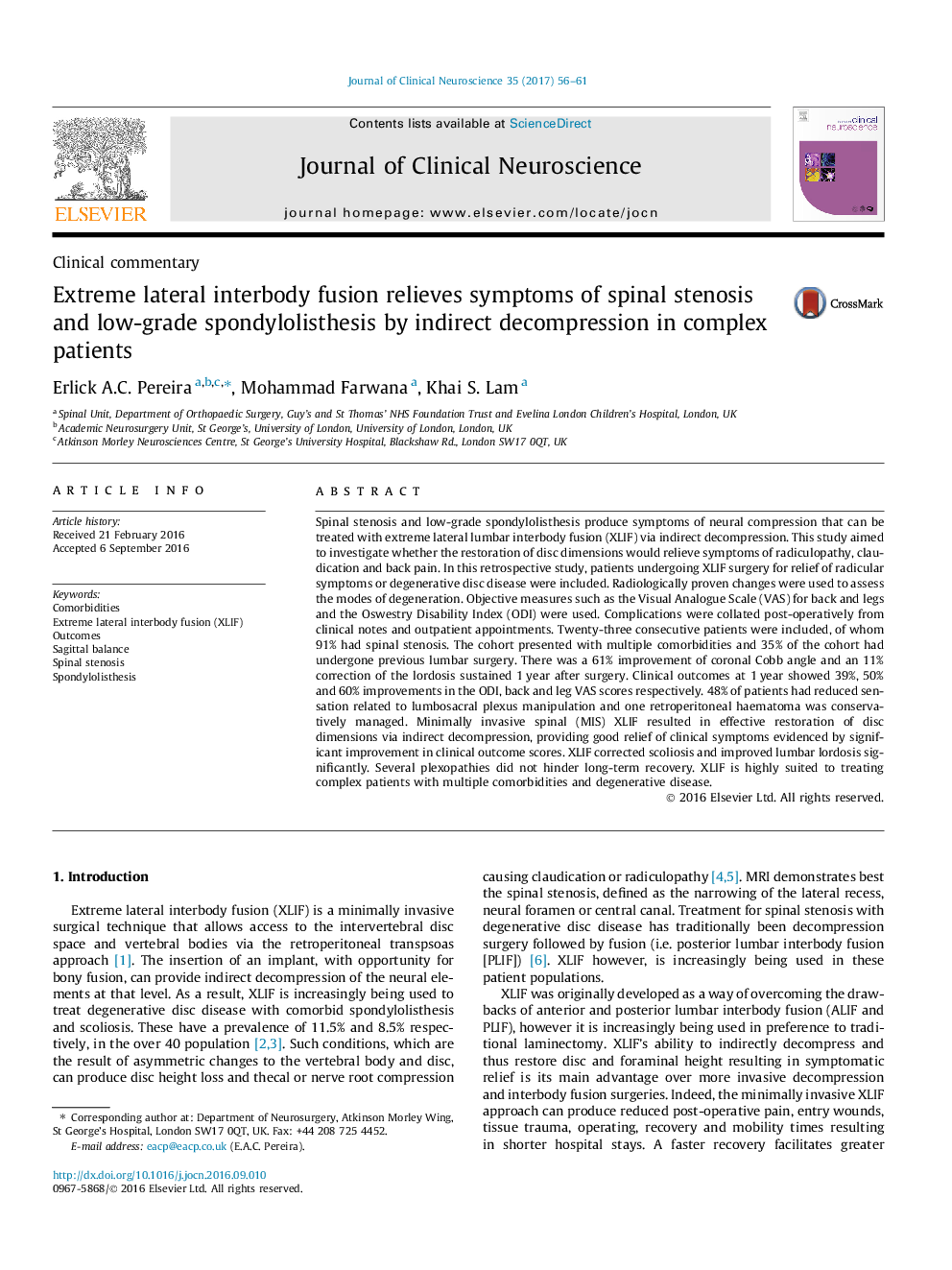| Article ID | Journal | Published Year | Pages | File Type |
|---|---|---|---|---|
| 5630068 | Journal of Clinical Neuroscience | 2017 | 6 Pages |
â¢Stenosis and low-grade spondylolisthesis can be indirectly decompressed by extreme lateral interbody fusion (XLIF).â¢XLIF can improve pain and disability in patients with comorbidities.â¢Sagittal balance parameters like scoliosis and lordosis can be improved by XLIF.â¢Lumbosacral sensory plexopathy is a common transient complication of XLIF.
Spinal stenosis and low-grade spondylolisthesis produce symptoms of neural compression that can be treated with extreme lateral lumbar interbody fusion (XLIF) via indirect decompression. This study aimed to investigate whether the restoration of disc dimensions would relieve symptoms of radiculopathy, claudication and back pain. In this retrospective study, patients undergoing XLIF surgery for relief of radicular symptoms or degenerative disc disease were included. Radiologically proven changes were used to assess the modes of degeneration. Objective measures such as the Visual Analogue Scale (VAS) for back and legs and the Oswestry Disability Index (ODI) were used. Complications were collated post-operatively from clinical notes and outpatient appointments. Twenty-three consecutive patients were included, of whom 91% had spinal stenosis. The cohort presented with multiple comorbidities and 35% of the cohort had undergone previous lumbar surgery. There was a 61% improvement of coronal Cobb angle and an 11% correction of the lordosis sustained 1Â year after surgery. Clinical outcomes at 1Â year showed 39%, 50% and 60% improvements in the ODI, back and leg VAS scores respectively. 48% of patients had reduced sensation related to lumbosacral plexus manipulation and one retroperitoneal haematoma was conservatively managed. Minimally invasive spinal (MIS) XLIF resulted in effective restoration of disc dimensions via indirect decompression, providing good relief of clinical symptoms evidenced by significant improvement in clinical outcome scores. XLIF corrected scoliosis and improved lumbar lordosis significantly. Several plexopathies did not hinder long-term recovery. XLIF is highly suited to treating complex patients with multiple comorbidities and degenerative disease.
